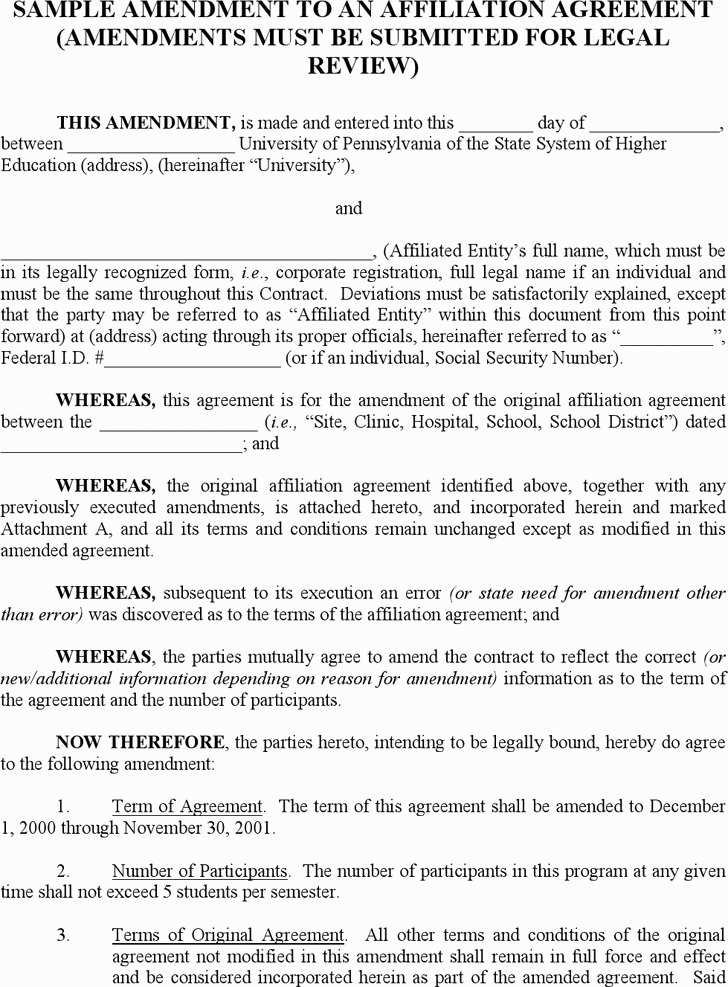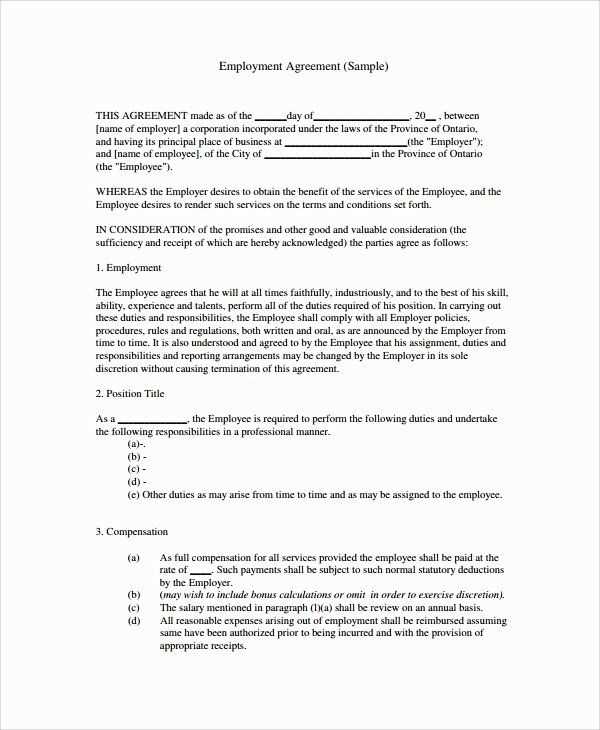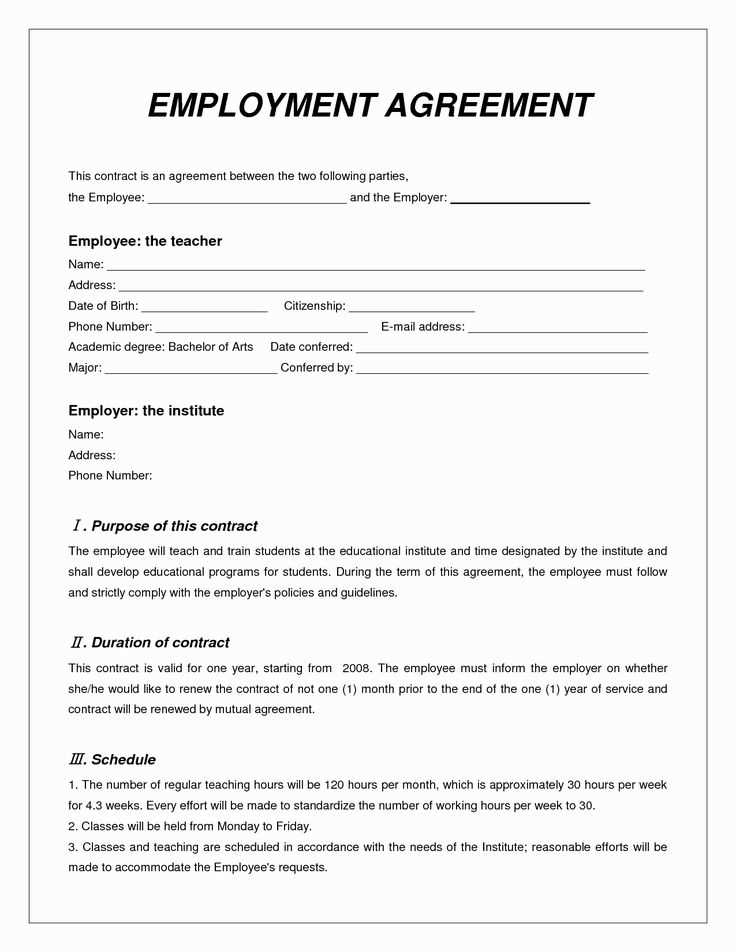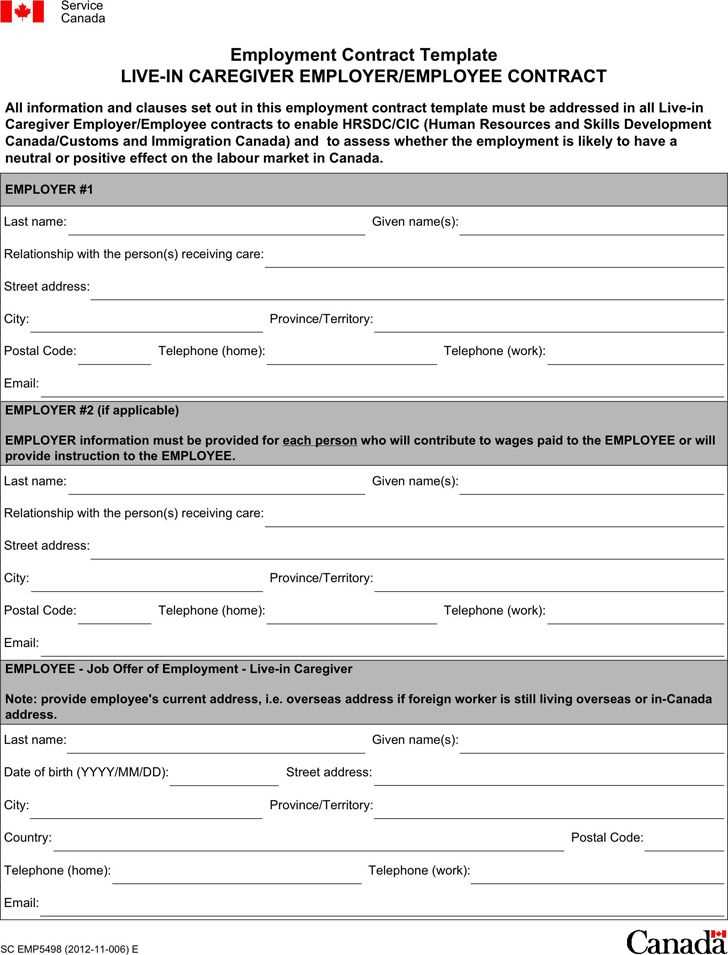Employment Contract Amendment Letter Template Guide

In any professional setting, there are occasions when it becomes necessary to make changes to an existing agreement between two parties. These alterations can arise due to evolving responsibilities, updated terms, or changes in external factors such as legal requirements. Effectively documenting these modifications ensures that both parties are on the same page and that all changes are clear and legally binding.
Creating a formal document to reflect these adjustments is crucial for maintaining transparency and preventing misunderstandings. Whether it’s a change in work duties, compensation, or work hours, a well-crafted written notice is essential for preserving the integrity of the arrangement. Understanding how to structure such a document can save time and protect all parties involved from potential conflicts.
Properly drafted documents help avoid confusion and ensure that each change is legally sound and accepted by both sides. Having a reliable guide for drafting such modifications makes the process smoother and more efficient, ensuring that the relationship remains professional and clear.
Understanding Employment Agreement Modifications
When changes are needed in a professional arrangement, it’s essential to ensure that these updates are clearly outlined and documented. These revisions may involve adjustments to various aspects, including job duties, compensation, working hours, or other key terms. Properly managing these revisions helps maintain clarity and prevents potential disputes between the parties involved.
There are several reasons why modifications may occur in a professional relationship:
- Shifting business needs or operational changes
- Legal or regulatory updates that affect the original terms
- Personal requests from either party, such as changes in role or compensation
- Performance-related adjustments, such as promotions or reassignment of tasks
In any of these cases, it is important that both parties agree on the changes in writing. This ensures mutual understanding and prevents any misunderstandings in the future. Clearly documenting the revisions allows for easier enforcement and reference in case of any issues that arise later on.
These updates should be communicated formally and with sufficient detail, ensuring that all parties are fully aware of the new terms. A professionally written document outlining these changes is a critical tool in protecting both parties’ interests.
Key Components of a Modification Document
When creating a formal notice to outline changes in an existing professional agreement, it’s essential to include certain key details to ensure clarity and avoid any confusion. A well-structured document not only helps formalize the changes but also serves as a record that can be referred to in the future if needed. Each component plays a crucial role in making sure both parties are fully informed and in agreement with the new terms.
Introduction of the Change
It’s important to start by clearly stating the purpose of the document. This includes identifying the nature of the modification and the specific terms being altered. Including the date of the original agreement and the date the new changes will take effect can further clarify the context of the revision.
Details of the Adjustments

The core of the document should focus on the precise changes being made. This section should list each alteration in a clear and detailed manner, highlighting the affected clauses or provisions. Both parties should review and agree to these changes before moving forward. Additionally, it’s helpful to reference any previous documents that the new modifications are based on to ensure consistency and avoid misunderstanding.
By addressing these elements thoroughly, the document will be clear, concise, and legally sound, making it easier for both parties to proceed with confidence.
Why You Need a Formal Document for Modifications
When changes are made to an existing professional arrangement, it is essential to formalize the updates in writing. This ensures that both parties are on the same page regarding the new terms and that there is a clear record of the modifications. Relying on verbal agreements or informal communications can lead to confusion or disputes down the line.
Having a formalized document serves several important purposes:
- Clarity and Transparency: A written notice ensures that both parties understand the changes and are in agreement with the new terms.
- Legal Protection: A formal document can act as a legally binding reference in case of disagreements or disputes.
- Record Keeping: It provides a clear record of changes, making it easier to track updates over time.
- Professionalism: Documenting changes professionally reflects a high standard of communication and ensures both parties are treated with respect.
Formalizing the process also prevents misunderstandings, ensuring that each party has a clear understanding of the updated arrangement and that the changes are legally valid and enforceable if needed.
How to Write a Professional Document
When drafting a formal communication to document changes in a professional arrangement, it’s important to ensure that the content is clear, concise, and polite. A well-written document helps avoid misunderstandings and establishes trust between both parties. There are several key elements that should be included to maintain professionalism and clarity throughout the process.
Follow these essential steps when creating a formal notice:
| Step | Description |
|---|---|
| 1. Address the Recipient | Begin by including the recipient’s name and title to ensure a personalized approach and to clarify the intended audience. |
| 2. State the Purpose | Clearly introduce the purpose of the document in the first few lines, outlining the changes being made and why they are necessary. |
| 3. Provide Clear Details | List the specific modifications being made and provide relevant details that will help both parties understand the updates. |
| 4. Use Professional Language | Maintain a polite and formal tone throughout the document, avoiding informal expressions or ambiguous language. |
| 5. Offer a Conclusion | Conclude with a statement confirming both parties’ agreement to the changes and include any necessary next steps or instructions. |
By following these guidelines, you can ensure that the document remains professional, transparent, and easy to understand for all involved parties.
Common Mistakes to Avoid in Modifications
When making changes to an existing professional agreement, it is crucial to avoid certain errors that can cause confusion or legal issues. Failing to properly document adjustments or neglecting to address important details can lead to misunderstandings and complications down the line. By being aware of these common pitfalls, you can ensure that your modifications are clear, valid, and enforceable.
Lack of Clarity and Detail

One of the most frequent mistakes is not providing enough detail about the changes being made. Vague language can lead to ambiguity and differing interpretations of the new terms. Always be specific about what is being changed, why, and when the changes take effect. Clearly outline the revised terms and ensure there’s no room for confusion.
Failure to Include All Relevant Parties
It’s essential that all parties involved in the original arrangement are included in the revision process. Omitting any key individuals can cause issues later on if they are not properly notified or involved in agreeing to the changes. Always ensure that every stakeholder is aware of and agrees to the updated terms.
Inaccurate dates, missing signatures, or incomplete details can all invalidate the document or cause complications if the changes need to be enforced. Careful attention to detail is essential to making sure that your revisions are effective and legally sound.
Legal Considerations for Agreement Changes
When modifying any professional arrangement, it is essential to consider the legal implications of the changes being made. Adjustments to terms or conditions must be carefully documented to ensure they comply with applicable laws and are enforceable. Ignoring legal requirements can lead to disputes, invalid modifications, or even legal action, which can have serious consequences for all parties involved.
Several legal aspects should be kept in mind when making changes:
- Mutual Agreement: Both parties must consent to the modifications. A unilateral change without the agreement of the other party may not be legally valid.
- Compliance with Laws: Ensure that any changes comply with local regulations, industry standards, or other legal requirements that may apply to the professional relationship.
- Clear Documentation: The updated terms must be clearly outlined and recorded in writing. Verbal agreements or informal changes can be difficult to enforce and may not hold up legally.
- Timing: Ensure that the effective date of the changes is clearly stated and appropriate. Some changes may need to follow a certain process or waiting period before they take effect.
By taking these legal considerations into account, you can avoid potential conflicts and ensure that the modifications are valid and enforceable in any future legal proceedings.
Finalizing the Agreement Modification
Once all changes to a professional arrangement have been discussed and agreed upon, the next crucial step is to finalize the updates. This process involves ensuring that both parties are fully informed, confirming their acceptance, and formally documenting the revised terms. Proper finalization not only protects both parties but also ensures the modifications are legally binding and enforceable.
Review and Confirmation
Before finalizing, both parties should carefully review the revised terms to confirm that everything has been correctly included and that there are no misunderstandings. This is the time to clarify any details and ensure that both individuals are in full agreement with the new arrangement. Once reviewed, both parties must sign the document to indicate their acceptance of the changes.
Distribution and Storage

After both parties have agreed to the modifications, the final version of the document should be distributed to all involved. Each party should keep a signed copy for their records. This ensures that, in case of future disputes or questions, a clear and official record of the updated terms is readily available.
Proper finalization of the document is critical to maintaining a professional and legally sound relationship moving forward, making it easier to address any issues that may arise in the future.